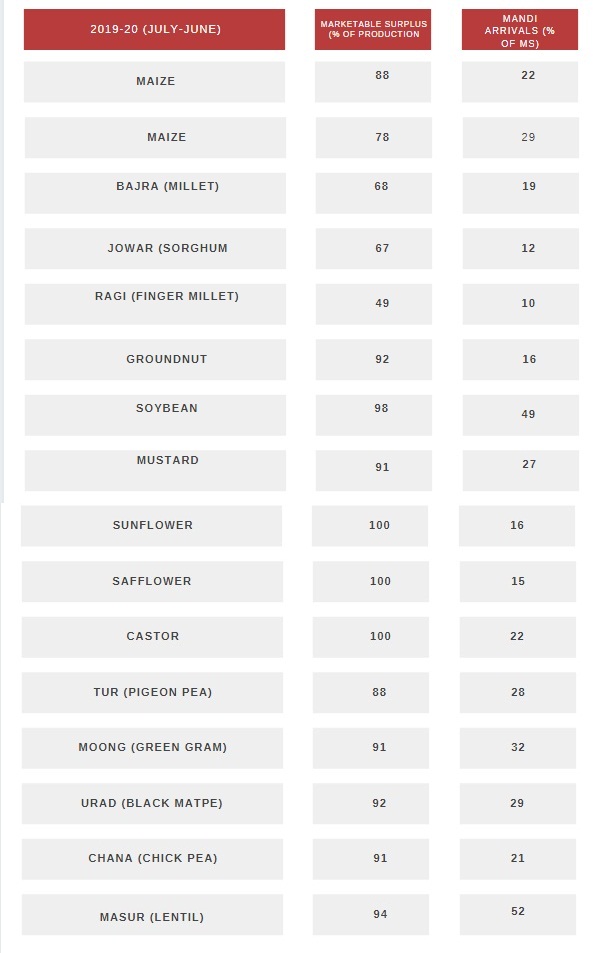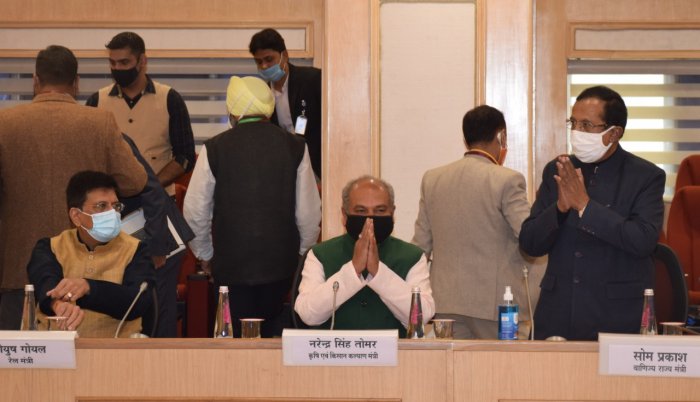Sachidanand
Amid misinformations peddled by pro-government experts and economists around the controversial farm laws, facts have become a major casualty. In view of the ongoing arguments for and against the farm laws, it is imperative to bring some key facts to the fore.
The government has repeatedly stated that the main objective in formulating these laws is to provide freedom to farmers to sell anywhere! Before these laws were brought in, first through Ordinances and later through Bills, neither any state APMC Act nor any other state law has any provision that debarred farmers from selling their produce anywhere.
The state APMC laws have prescribed that traders have to be registered in mandis to buy produce. Some states like Uttarakhand and Rajasthan have unified licensing system under which traders do not need to take license from individual mandis and they can trade in any APMC mandi in the state after registering at state level.
Many states have also issued to private traders license to buy from anywhere, inside and outside mandis by paying the market fees, usually 1-2%. Uttar Pradesh, for instance has issued more than 3,000 such permits. Himachal Pradesh too allows this for apple purchase. Secondly, this unified licenses are required only for cereals, pulses and oilseeds as most of the major agrarian states (some 16 in number) have delisted fruits, vegetables and spices from APMC purview. Traders have freedom to buy delisted commodities outside mandis without paying any market fees.
If we exclude fruits, vegetables and spices, the only commodities in which there was alleged “restrictions” are cereals, pulses, oilseeds and cotton in some states. Now, what is the percentage of crops that come to mandis? This is the crux of the matter. The chart below says it all.

In this analysis, wheat, paddy and cotton have been kept out since mandi arrivals of these crops do not reflect a correct picture since the government also buys significant chunk though procurement centres, which are placed inside and outside mandis.
Marketable surplus (MS) is the quantity derived after deducting self consumption quantity (for food, feed and seed) out of production. The mandi arrivals mean the volume sold inside APMC mandis. As seen from the table, 52% of marketable surplus of masur is sold inside and 48% outside mandis by farmers. Similarly, soyabean is another top value crop that is sold 49% in mandis and 51% outside. On the other hand, only 10% of ragi is sold inside mandis and 90% sold outside mandis.
What is the fuss about the laws when these crops are already sold outside APMC mandis in significant quantity?
Why the government is adamant when it is aware of reality? Are the farmers unaware of these facts and pushing for strengthening APMC mandis?
It could be the influence of traders or arthias with regards to Punjab farmers expressing concern about closure of APMC mandis since 80-90% of main crops – paddy and wheat – produced in the state are sold in mandis or through sub-yards (procurement centres) of mandis.
The government will never answer this question as it put to question the very basis of framing these Acts.
The real reason for the private sector push for the laws is one — not to pay market fees estimated anywhere between Rs 7,000-10,000 crore annually, besides saving about Rs 5,000 crore on account of arthia commission or service charge in mandis.
Secondly, to destroy the benchmark price. Some 10 years back foundation was laid to systematically move to destroy the APMC mandis with the sole intention to prevent farmer from getting any clue on what is his crop price! Some corporate, encouraged by the Bihar model, had approached the Centre to handover the Agmarknet portal with the promise of managing it better, though government did not accede to their demand. This is the price data collection module through which the Centre knows weighted average prices in more than 6,000 mandis across the country.
As 86% of India’s farmers are small and marginal having less than 5 acres of land, the daily price discovery at mandis arrived through auction forms the basis that farmers bargain with traders even when they sell outside mandis. Once that benchmark price goes away with closure of mandis, farmers will lose their only bargaining instrument. Bihar farmers suffer because of this as they do not exactly know at what price they should sell their produce after the state removed APMC Act 15 years back.
(Sachidanand is an independent journalist. Views expressed by author are personal)
(Image source: PIB Photo)
Also read: Untold facts of 3 farm laws Part I

